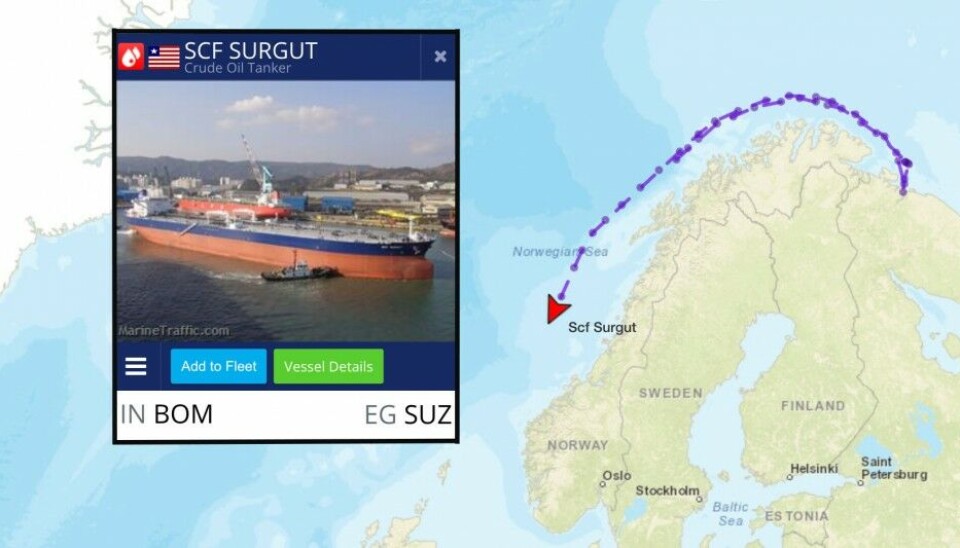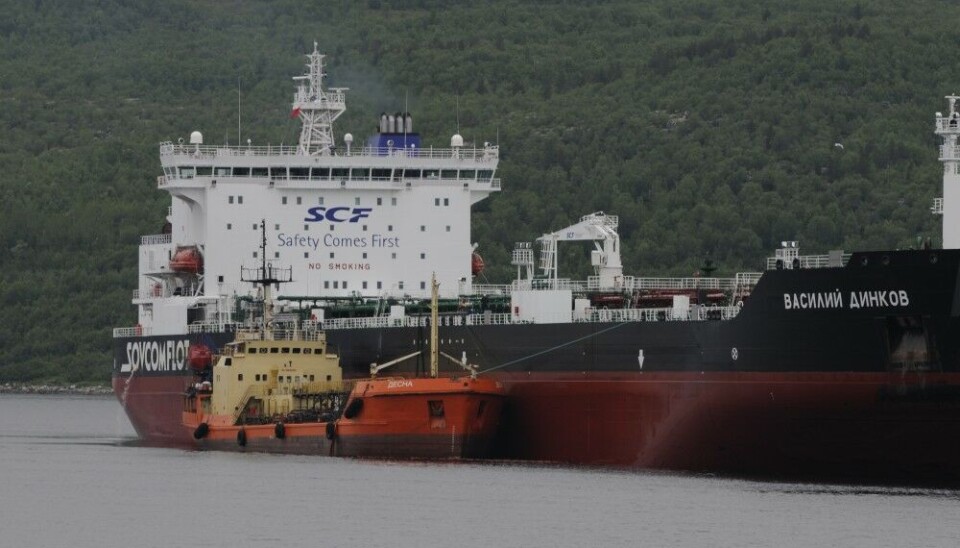
More Russian Arctic oil via Murmansk redirects to India
The“Surgut” is one of the supertankers loaded with crude oil from Murmansk now sailing past Europe and instead heading to India.
With European Union sanctions on Russian oil coming into force earlier this week, the huge tankers loaded at terminals in the Kola Bay are forced to find new markets.
Like the “Surgut”, a Suezmax 120,000 tons Sovcomflot tanker currently sailing south along the coast of Norway.
Instead of heading to Rotterdam, the Liberian-flagged Russian-owned tanker has Mumbai, India as final destination. Sailing distance is more than 9,100 nautical miles and will take about 38 days. But first the supertanker heads to the Suez Canal.

The “Surgut” was loaded in the ice-free port of Murmansk, but the oil had then already been on a long journey. Shore terminals in the city are supplied with oil arriving by rail from Western Siberia. In addition, ship-to-ship reloading takes place in Kola Bay from smaller tankers crossing the Barents Sea from oil fields and terminals further northeast in the Russian Arctic.
Before Moscow’s military attack on Ukraine, some 1,2 million barrels of oil a day were sent to EU ports, according to Bloomberg.
India, China and Turkey are now the biggest buyers of displaced Russian crude oil.
India has since the start of the war imported oil from Russia at discounted rates. New Delhi has also declared intentions to boost bilateral trade with Russia and Rosneft’s huge Arctic Vostok Oil project could see investments by India.
According to vessel tracking data monitored by Bloomberg, India has since March, April boosted its oil import from Russia up to about one million barrels a day, nearly the same amount as the EU’s pre-war import.

While export of crude oil fell in early November from ports in the Black Sea and the Pacific, it rose from the port of Murmansk and stayed unchanged from the Ust-Luga terminal in the Baltic.
Over the last three weeks, almost three-quarters of the volume out of Murmansk is currently heading to Asia. The terminals in Murmansk and Kola Bay send out some 250,000 barrels per day on average.
From January to the summer, the vast majority went to ports in Europe.

As previously reported by the Barents Observer, the Russian ice-classed oil tanker “Vasily Dinkov” this autumn made a test voyage along the Northern Sea Route to the Chinese port of Rizhao.
With Asia as the main market, it will be interesting to see how Russia will take advantage of the short-cut Arctic route next summer instead of sailing the more than 9,000 nautical miles detour via Suez.














